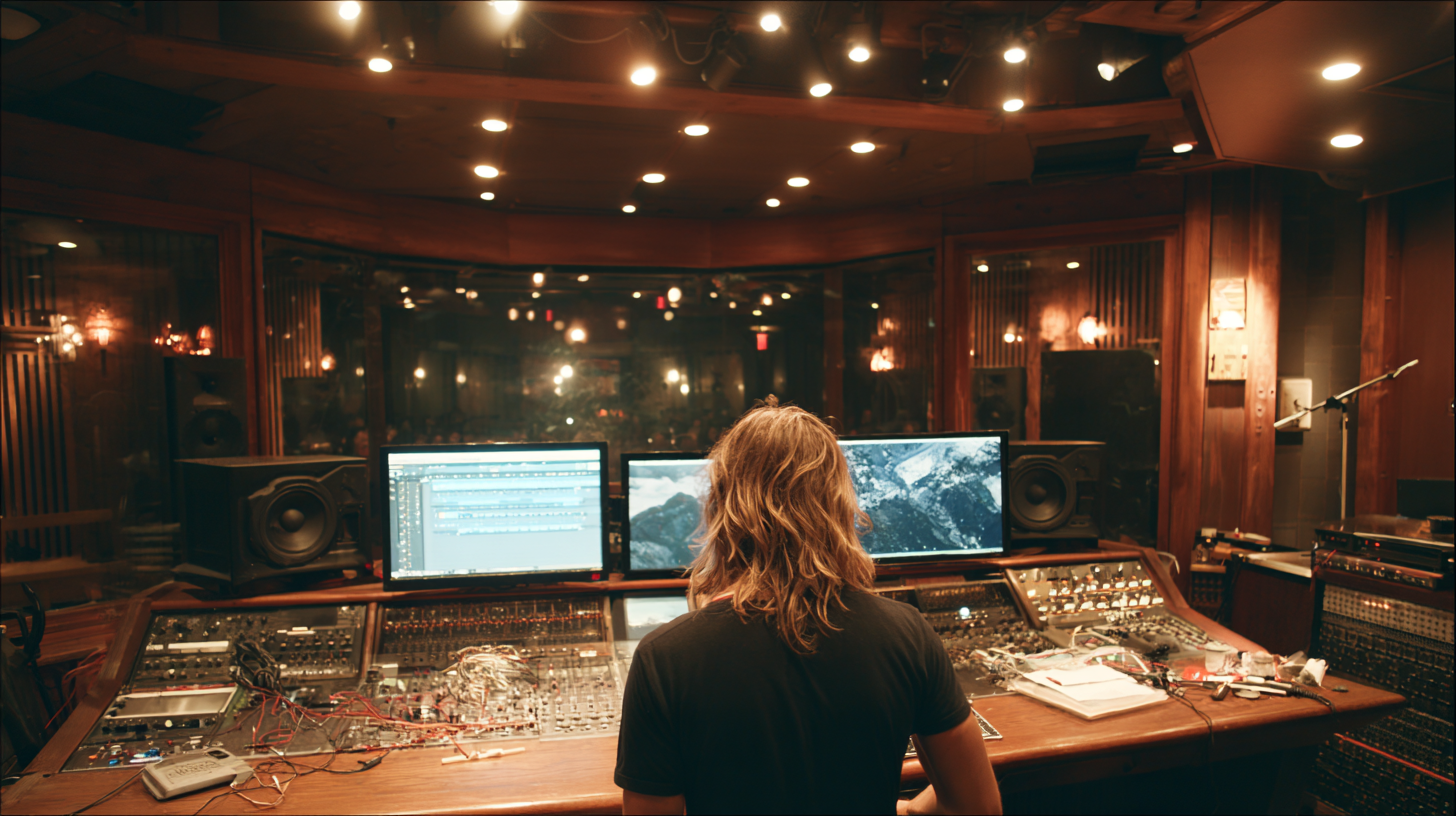
Creating Holding Absence’s Massive Wall of Sound Guitar Tones
Nail The Mix Staff
When you hear a Holding Absence track, the guitars feel less like an instrument and more like a force of nature. They’re huge, emotive, and create an incredible wall of sound that defines their sonic signature. So how do you get there? We’re diving into the mix session with producer Taylor Larson to break down the techniques he used to take Dan Weller’s DI and amped guitar tracks from good to absolute gold for the album The Greatest Mistake of My Life.
What’s fascinating is that this massive sound isn’t about one perfect amp tone. It’s about clever blending, surgical processing, and the art of layering. Let’s dig into some of the specific strategies Taylor used, which you can apply in your own mixes. If you want to see him do it all firsthand, you can grab the full multitracks and watch his complete mixing session for “Afterlife”.
The Foundation: Combining “Bad” Tones to Make a Great One
Right off the bat, Taylor reveals a core secret to the rhythm guitar sound: it’s built from two amps that, on their own, sounded a bit thin and underwhelming. Dan sent over amped tracks from a Mesa and a Bad Cat, and Taylor’s initial reaction wasn’t great. Individually, they lacked body and punch.
But when played together, magic happened. The two distinct amp tones filled in each other’s gaps. Where one was thin, the other had midrange character. Their combined frequencies created a single, massive-sounding rhythm guitar tone that was far greater than the sum of its parts. It’s a perfect reminder that sometimes the “perfect” solo tone isn’t the goal; it’s about how tones interact in the mix.
The Core Processing Chain for Clarity and Punch
With the foundational blend established, Taylor applied a consistent processing chain to both rhythm tracks to shape them into a cohesive and powerful force.
Taming Harshness and Adding Definition with EQ
First up, he cleans up the raw tracks by dealing with resonant peaks and harshness. He uses Soothe2 on both the Mesa and Bad Cat tracks to dynamically tame any unpleasant frequencies that jump out, especially during chugs and sustained chords. This is a crucial first step that makes subsequent boosting much more musical.
Next, he turns to the Slate Digital Mix Hub for the main EQ shaping. His approach is remarkably consistent and effective:
- High-Pass Filter: He sets a high-pass filter around 187 Hz to cut out low-end mud and keep the guitars from fighting the bass and kick drum.
- Low-Pass Filter: To remove unnecessary fizziness and keep the hi-hats clear, he uses a low-pass filter, rolling off the top end somewhere between 7 kHz and 8 kHz.
- Presence Boost: A significant presence boost is applied to both tracks. This helps the guitars cut through the mix, enhancing note clarity and aggression without adding harshness.
- Mid-Range Cut: On the Mesa track only, he dips a little bit around 1k to carve out a bit more space.
For some final polishing, he uses an additional EQ on the Mesa track to add a touch of “air” and tame some “woofy” frequencies, finishing with a tilt EQ to add a bit more brightness and clarity. For more strategies on sculpting your tones, our guide to modern metal EQ is a great resource.
Light Compression and Stereo Width
When it comes to compression, Taylor’s philosophy for these guitars is “less is more.” He describes the tones as being more on the “mushy” side, so hitting them with a heavy-handed compressor would kill their dynamics. Instead, he applies just a couple of decibels of gain reduction to gently control the performance and add a bit of energy. It’s a subtle move that makes things feel more fun and glued together. If you’re struggling to dial in your guitar bus, check out these powerful metal compression secrets.
To finish the core chain, he uses a stereo widener plugin on both tracks, set to his favorite 127 setting. This pushes the guitars out to the sides, creating a massive stereo image and making room for the vocals, snare, and bass right down the middle.
The “Weird” Parallel Trick for Extra Bloom
Here’s where things get really creative. In addition to the main amped tracks, Taylor created his own reamped track and blended it in. But the magic is in a parallel process he used on this track, inspired by something he saw from the legendary Joe Barresi.
The Signal Chain
- He takes the already amped guitar sound.
- He sends it to a parallel bus.
- On that bus, he first runs it through a Tube Screamer plugin to really mangle and saturate the signal.
- Then, it goes into a Neve preamp plugin, where he drives the input super hard.
The resulting sound, if you were to solo it, is pretty gnarly—it’s super saturated, low-mid heavy, and “rough.” But when you blend that parallel signal back in underneath the main guitars, it adds an incredible “bloom” and dimension, particularly in the low-mids. This one weird trick adds a layer of richness that you can feel more than you can explicitly hear.
Building the Wall: The Art of Stacking Layers
The final piece of the puzzle is the sheer number of layers. As Taylor mentions, the Holding Absence record is known for having a ton of guitar tracks, creating that signature “wall of sound.” It’s not about making each layer loud; it’s about what each one contributes to the overall texture.
Beyond the main rhythms, he blends in several other key elements at lower volumes:
- The “Screwed Up” Double: Another double-tracked guitar part sounds almost out of phase and crackly on its own. It’s a strange sound, but when tucked underneath the main rhythms, it adds a unique kind of airy, chaotic texture that contributes to the larger-than-life feel.
- Jangly High Voicings: Other layers are dedicated to playing higher chord voicings. These aren’t meant to be heard as distinct lead parts, but rather to extend the harmonic content of the main rhythm chords. When you pop them in, the rhythm guitars suddenly feel more harmonically rich and complete.
- Noisy Textures: Finally, some “crazy sounding” noisy layers are mixed in at a very low volume, just to add to the density and feel.
Taylor’s blending philosophy is simple: he picks the track he likes most as the “lead” guitar (in this case, the Mesa) and then slowly brings up the fader on each subsequent layer until it just starts to add the character he wants, then pulls it back slightly. It’s all about trusting your ears until it feels right.
Bring These Techniques to Your Mixes
Crafting the Holding Absence guitar sound is a masterclass in creative blending and layering. It’s not about finding one magic amp, but about understanding how different sounds and textures can work together. By combining tones, using smart EQ and parallel processing, and layering strategically, you can create your own massive wall of sound.
Holding Absence on Nail The Mix
Taylor Larson mixes "Afterlife"
Get the Session
Learning these tricks is one thing, but watching a pro like Taylor Larson actually apply them in real-time, explaining every fader move and plugin choice, is another level. With a Nail The Mix membership, you get to be a fly on the wall for mix sessions just like this every single month.
If you’re ready to stop guessing and start learning from the best producers in the business, check out what a Nail The Mix membership can do for you. Download the full multitracks and see how Taylor Larson built this incredible mix from scratch.






